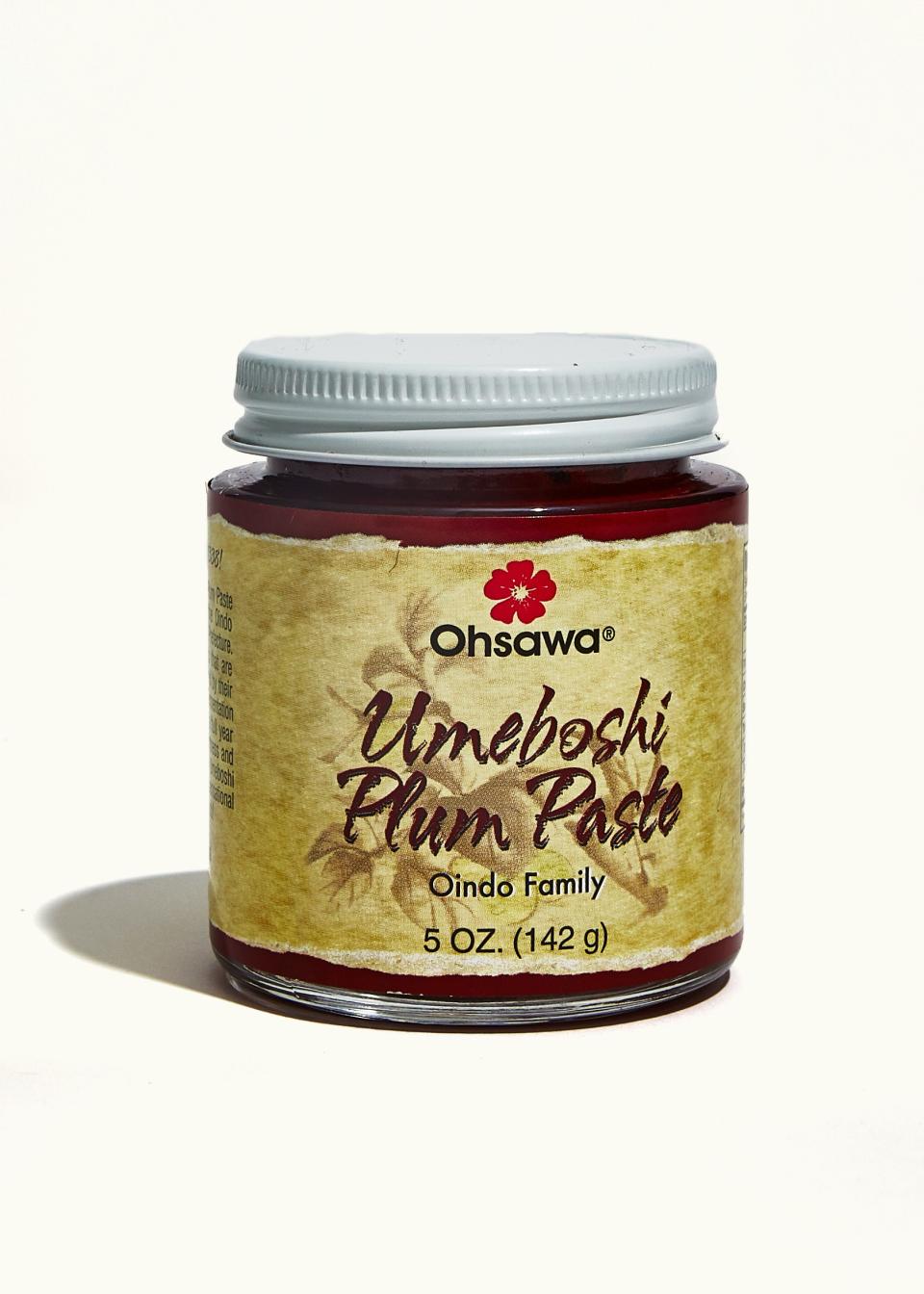Umeboshi Paste Is the Vegan Flavor Bomb You Didn’t Know You Needed
I first learned about umeboshi paste—the Japanese condiment made of pureed, fermented ume fruit—from my all-time favorite cookbook, The Cranks Bible by Nadine Abensur. She includes the paste in several recipes and writes, “It sometimes adds the perfect astringent note not just to Japanese dishes but anything similarly inspired.” Intrigued, and freshly in love with a vegan, I tracked down the paste in a health food store and made Abensur’s Quick Aromatic Laksa, aiming to impress. That vegan moved in and stayed for life; I haven’t been without a jar of umeboshi paste since.
To make umeboshi, ume—translated variably as a type of plum or apricot—are picked when they’ve just started to ripen in June, covered with salt, weighted, and left to ferment for two weeks. Red perilla leaves are added, which dye the umeboshi their vibrant shade of pink over the next three weeks. The ume are then dried in the summer sun for several days, put back in their fermenting liquid for at least another week, and finally transferred to an airtight container to age for several months or even years. In "The History and Culture of Japanese Food,” Anthropologist Naomichi Ishige writes, “Occasionally a jar of umeboshi over a hundred years old is found in a storehouse, and the pickles are still edible.”

According to Ishige, unripened ume was used medicinally in China since ancient times, and in premodern Japan “was believed to prevent infection during a plague.” Umeboshi developed in Zen monasteries before spreading to the Samurai class. The Zohyo Monogatari (“Story of the Common Soldiers”) advised warriors short of breath to “take an umeboshi from your provision bag and look at it. Look at it. Don’t eat it. As long as you survive, treasure it where you walk.” In the 1970s, nutritionist Otsuka Shigeru displayed a similar faith in the power of this pickle’s very presence, writing, “Even the middle-aged gentleman experienced in overseas travel somehow recovers his composure by merely remembering the umeboshi in his suitcase as he undergoes the departure process at Haneda International Airport.” Researchers today continue to explore the potential powers of umeboshi, which purportedly include everything from cavity prevention to curing a hangover to inhibiting cancer growth.
If the health benefits haven’t sold you, the yumminess and versatility will. Traditionally eaten with rice, I also use umeboshi paste anywhere an omnivore might use anchovies, fish sauce, or Parmesan cheese. I stir it into risotto and pasta puttanesca, blend it into pesto, saute it with a mountain of broccoli, sneak it into Thai curry, and wield it as the until-now-secret weapon in my Caesar dressing. It lifts my tofu-ricotta lasagna out of boring-town, and it gilds the lily of a lemony, capery marinade that I use when I want to conjure sea-vibes out of tempeh (it works!).
Certainly you can use miso and nutritional yeast—those other vegan flavor-makers—in all of these dishes, and sometimes I do. But umeboshi paste has a special acidic sharpness that the others just don’t, a tart, almost briny oomph that hits just the right note.

